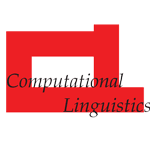
COMPUTATIONAL LINGUISTICS
Scope & Guideline
Transforming Communication with Computational Insights
Introduction
Aims and Scopes
- Natural Language Processing (NLP) Techniques:
The journal publishes research on various NLP techniques, including machine translation, text summarization, sentiment analysis, and dialogue systems, showcasing advancements in algorithms and models that facilitate language understanding. - Linguistic Theory and Computational Models:
Research that bridges linguistic theory with computational models is a core focus, exploring how theoretical insights can inform the development of effective computational tools for language processing. - Machine Learning and Deep Learning Applications:
A significant emphasis is placed on the application of machine learning and deep learning methodologies to language tasks, including the development of neural networks for various language processing challenges. - Cross-Linguistic and Low-Resource Language Research:
The journal addresses challenges in cross-linguistic studies and low-resource language processing, promoting methods that enhance the accessibility and usability of NLP technologies across diverse languages. - Evaluation and Interpretability of NLP Models:
There is a consistent focus on the evaluation of NLP systems, including the reliability of evaluation metrics and the interpretability of models, ensuring that they are robust and understandable.
Trending and Emerging
- Explainability and Interpretability in NLP:
There is an increasing focus on making NLP models more interpretable and explainable, addressing the need for transparency in AI systems and enhancing user trust in automated language processing. - Integration of Linguistic Typology in NLP:
Research that incorporates insights from linguistic typology into NLP applications is on the rise, emphasizing the importance of understanding language diversity in developing more effective models. - Ethics and Social Implications of NLP:
Emerging discussions around the ethical implications of NLP technologies, including biases in language models and their societal impacts, are becoming more prominent in recent publications. - Low-Resource Language Processing:
There is a growing emphasis on developing methodologies for processing low-resource languages, reflecting a broader commitment within the field to inclusivity and accessibility in language technologies. - Neural Approaches to Language Generation:
Advancements in neural generation techniques, particularly in data-to-text generation and conversational agents, are becoming a focal point, showcasing the potential of neural models in creating coherent and contextually relevant text.
Declining or Waning
- Traditional Rule-Based Approaches:
There has been a marked decrease in publications focusing on traditional rule-based methods for language processing, as the field increasingly favors data-driven approaches, particularly those leveraging deep learning. - Basic Statistical Methods:
The prevalence of basic statistical methods in NLP research appears to be declining as more sophisticated machine learning techniques take precedence, leading to a reduced focus on simpler models and analyses. - Theoretical Linguistics Without Computational Integration:
Research that explores theoretical linguistic concepts without computational application is less common, indicating a shift toward more applied studies that prioritize practical NLP outcomes. - Focus on Language-Specific Studies:
There is a diminishing trend in studies that focus exclusively on specific languages, as the journal's emphasis shifts toward cross-linguistic methodologies and universal approaches in NLP.
Similar Journals

Journal of Logic Language and Information
Connecting Ideas: Insights from Logic, Language, and PhilosophyThe Journal of Logic Language and Information, published by SPRINGER, stands as a leading interdisciplinary platform dedicated to the exploration of the interconnections between logic, language, and information theory. With a history spanning from 1992 to 2024, this esteemed journal provides a vital forum for researchers, professionals, and students in fields such as Computer Science, Linguistics, and Philosophy. Notably recognized in the 2023 rankings, it holds a Q2 quartile in Computer Science (miscellaneous) and Q1 quartiles in both Linguistics and Language, and Philosophy, reflecting its high academic quality and relevance. Despite its nuanced focus, the journal's diverse scope attracts a global readership, encouraging innovative research and critical discourse. Although it is not an Open Access publication, the Journal's valuable contributions can be accessed through various institutional subscriptions, ensuring that its scholarly output remains influential within the academic community.

AI, published by MDPI, is a distinguished open access journal dedicated to advancing the field of artificial intelligence. Since its inception in 2020, the journal has swiftly established itself as a prominent platform for scholarly research, currently ranking in the Q2 category for 2023 within the artificial intelligence sector according to Scopus. With an impressive global reach from its base in Basel, Switzerland, the journal aims to foster innovation and collaboration among researchers, professionals, and students alike, providing a forum to share groundbreaking findings and applications in AI. The journal's commitment to accessibility ensures that research is available to a wide audience, enhancing knowledge dissemination and contributing significantly to the ongoing evolution of artificial intelligence technologies. To explore the latest in AI research, readers can access articles through their open access model, encouraging an inclusive academic environment.

Glottometrics
Bridging Linguistics and Mathematics for Innovative ResearchGlottometrics is an esteemed academic journal dedicated to the intersection of linguistics and quantitative methods, published by the International Quantitative Linguistics Association (IQLA). Based in Germany, this journal serves as a vital platform for researchers and professionals in the fields of linguistics and applied mathematics, fostering the exploration of quantitative approaches to language studies. With its impact factor reflecting its commitment to high-quality research, Glottometrics has established a robust presence in the academic community, as denoted by its categorization in the Q2 quartile in Linguistics and Language and Q4 in Applied Mathematics. While the journal operates on a subscription-based model, it has made significant strides in the ranking hierarchy, securing positions in the 44th to 48th percentiles across various relevant categories in Scopus. Spanning the years 2017 to 2024, Glottometrics invites contributions that harness innovative quantitative methodologies for linguistics research, making it an essential resource for students, researchers, and professionals engaged in the dynamic analysis of language.
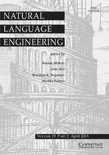
Natural Language Engineering
Pioneering Research in Language EngineeringNatural Language Engineering is a premier journal published by Cambridge University Press, dedicated to advancing the field of artificial intelligence and its intersection with linguistics and software. Since its inaugural publication in 1995, the journal has established itself as a vital platform for innovative research and development in natural language processing (NLP) and engineering. With a notable impact factor reflecting its influential contributions, it ranks in the top tiers across various categories, including Q1 in Linguistics and Language and Q3 in Artificial Intelligence. Researchers and practitioners alike benefit from the opportunity to access insightful articles that address both theoretical aspects and practical applications of NLP technologies. Although it operates under a traditional subscription model, the rigorous peer-review process ensures high-quality publications that foster academic discourse and collaboration within the community. This journal is essential for anyone interested in the evolving landscape of language engineering, making it a cornerstone reference for upcoming scholars and seasoned professionals aiming to push the boundaries of knowledge in this dynamic field.

IEEE Open Journal of the Computer Society
Unlocking Innovative Insights in TechnologyIEEE Open Journal of the Computer Society is an esteemed open-access journal dedicated to advancing the field of computer science. Published by IEEE-INST ELECTRICAL ELECTRONICS ENGINEERS INC since 2020, this journal promotes innovative research and scholarly communication in a rapidly evolving technological landscape. With a notable Q1 ranking in the Computer Science (miscellaneous) category and a high Scopus percentile of 92, it serves as a premier platform for disseminating cutting-edge findings and interdisciplinary studies. The journal is committed to facilitating unrestricted access to valuable insights, fostering collaboration among researchers, professionals, and students alike. As it continues to publish impactful articles through 2024 and beyond, the IEEE Open Journal of the Computer Society remains a vital resource for anyone interested in the latest trends and developments in computer science.
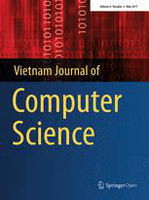
Vietnam Journal of Computer Science
Fostering collaboration for groundbreaking discoveries in AI and beyond.Vietnam Journal of Computer Science, published by World Scientific Publishing Co Pte Ltd, serves as a prominent platform for researchers and professionals in the rapidly evolving field of computer science. Launched as an Open Access journal in 2013, it aims to disseminate high-quality research across various subfields, including Artificial Intelligence, Computational Theory and Mathematics, Computer Vision, and Information Systems. With its ISSN 2196-8888 and E-ISSN 2196-8896, the journal provides valuable insights and contributes to the growing body of knowledge in computer science, particularly in Southeast Asia. Despite its relatively recent establishment, the journal has achieved significant rankings, including Q3 status in multiple categories and notable visibility in Scopus metrics, evidencing its commitment to fostering innovative research. This journal is essential for those looking to stay at the forefront of computational advancements and applications, particularly in Vietnam and beyond, facilitating an engaging dialogue among scholars and industry professionals.

International Journal of Semantic Computing
Advancing the Frontier of Semantic TechnologiesThe International Journal of Semantic Computing is a premier scholarly publication focused on the intersection of artificial intelligence, computer networks, and linguistics, published by World Scientific Publishing Co PTE Ltd. Since its inception in 2007, this journal has strived to advance the field of semantic computing by promoting innovative research and interdisciplinary collaboration among professionals and academics. With a diverse scope that spans across various categories including Artificial Intelligence, Information Systems, and Linguistics, it boasts commendable rankings, particularly in the fields of Linguistics (77th Percentile) and Linguistics and Language (Rank #259/1167). The journal caters to a broad audience by offering critical insights and cutting-edge studies, thereby contributing significantly to knowledge enhancement in semantic technologies and computational linguistics. Although it does not offer open access options, its rigorous peer-review process ensures the publication of high-quality research that is invaluable for both researchers and students seeking to deepen their understanding in these rapidly evolving areas.
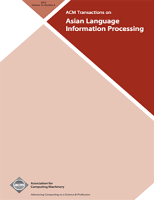
ACM Transactions on Asian and Low-Resource Language Information Processing
Exploring the frontiers of low-resource language processing.ACM Transactions on Asian and Low-Resource Language Information Processing is a distinguished scholarly journal published by the Association for Computing Machinery (ACM), focusing on the processing of Asian and low-resource languages in the field of computer science. With an ISSN of 2375-4699 and an E-ISSN of 2375-4702, this journal serves as a vital platform for researchers and professionals dedicated to advancing language technology and natural language processing in underrepresented linguistic contexts. It has achieved a notable position in the academic community, ranking #94 out of 232 in the broader category of Computer Science with a 59th percentile ranking according to Scopus. As the journal converges on its comprehensive goals from 2015 to 2024, it emphasizes open debates and innovative methodologies to tackle challenges relevant to low-resource language processing. This commitment to publishing high-quality research, though it does not currently offer open access, ensures that the journal remains an essential resource for researchers, educators, and students striving to contribute to this dynamic field.

Language and Linguistics Compass
Connecting Scholars Across the Globe in Language ResearchLanguage and Linguistics Compass, published by Wiley, stands as a premier journal in the field of linguistics, showcasing innovative and interdisciplinary research. With its ISSN 1749-818X and E-ISSN matching, the journal has built a robust reputation, achieving an impressive Q1 ranking within the linguistics category for 2023, placing it in the top 4% of its field. Its Scopus rank of 48 out of 1167 highlights its influence and significance among linguistics journals, boasting a commendable 95th percentile. This journal serves as a vital resource for researchers, professionals, and students, offering a wide range of accessible articles that illuminate current trends and advances within the domain of language studies. Although it is not Open Access, the journal is committed to quality and diversity in its publications, ensuring scholarly articles from various sub-disciplines of linguistics are represented from 2008 through 2024. Located in the United Kingdom, Language and Linguistics Compass invites contributions from around the globe, reinforcing its status as a leading forum for linguistic discourse.
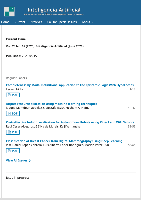
Inteligencia Artificial-Iberoamerical Journal of Artificial Intelligence
Exploring the Frontiers of AI Innovation.Inteligencia Artificial-Iberoamerican Journal of Artificial Intelligence, published by the ASOC ESPANOLA INTELIGENCIA ARTIFICIAL, serves as a pivotal platform for disseminating cutting-edge research in the burgeoning fields of artificial intelligence and software development. Established in 1997 as an Open Access journal, it ensures broad accessibility to its scholarly content, thus fostering collaboration and knowledge exchange amongst researchers, professionals, and students across the globe. Based in Valencia, Spain, the journal currently operates within a significant timeline spanning from 2004 to 2010 and 2012 to 2024, enabling continual contributions to the academic discourse. Although it holds a Q4 quartile ranking in both the Artificial Intelligence and Software categories and a notable yet competitive Scopus ranking among its peers, the journal remains committed to advancing the understanding and application of sophisticated AI methodologies. As it continues to embrace innovative research, this journal stands as a crucial reference point for those keenly navigating the complexities of artificial intelligence in a rapidly evolving digital landscape.